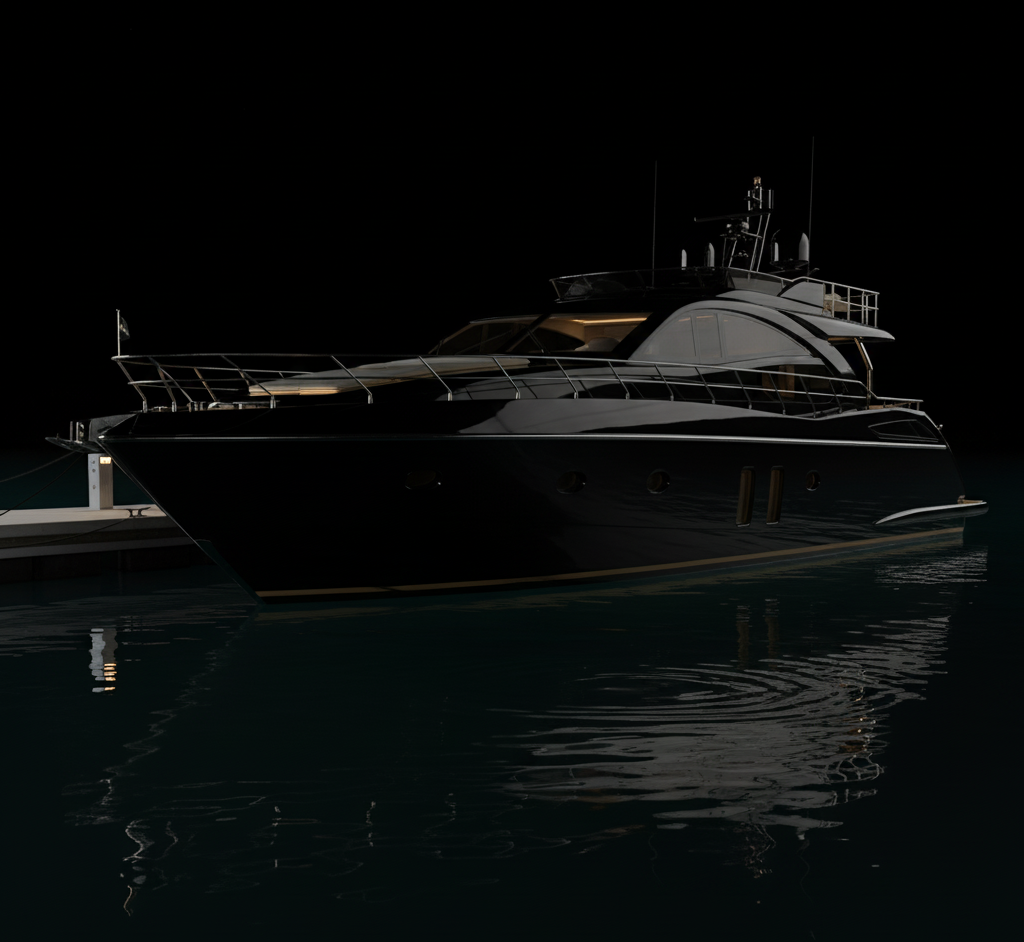
Hear from Our Customers

Your ceramic coating creates an invisible shield that works 24/7. Water beads off like it’s afraid to stick around. Bird droppings and road grime wipe away with a simple rinse. Salt spray from Long Island waters slides right off your yacht’s hull.
The difference isn’t just visual—though that deep, wet gloss will turn heads at every marina and car show. It’s practical. You’ll spend less time scrubbing and more time enjoying what you invested in. Your paint stays vibrant. Your gelcoat resists that chalky oxidation that destroys resale value.
This isn’t temporary protection that fades after a few washes. We’re talking about 3-5 years of real defense against everything Hampton Bays weather throws at your prized assets.
We understand what’s at stake when you own luxury vehicles and yachts in Hampton Bays. We’ve built our reputation serving the discerning owners who demand more than basic car wash services.
Our team specializes in both automotive and marine ceramic coating applications. We know the difference between protecting a weekend cruiser and a six-figure yacht. We understand why your Ferrari needs different care than your neighbor’s sedan.
Hampton Bays presents unique challenges—salt air, intense summer sun, and the kind of weather that can damage unprotected surfaces in months, not years. That’s exactly why we focus exclusively on professional-grade ceramic coating systems that stand up to Long Island’s coastal environment.

Real ceramic coating isn’t something you spray on in your driveway. It starts with thorough surface preparation—removing every trace of contamination, oxidation, and previous wax buildup that could compromise the bond.
Next comes multi-stage paint correction if needed. We’re not just covering up swirl marks and scratches—we’re eliminating them completely so your coating goes on a perfect surface. This step separates professional application from DIY attempts.
The ceramic coating itself bonds at a molecular level with your paint or gelcoat. We apply it in controlled conditions, allowing proper cure time between coats. No shortcuts. No rushing the chemistry.
After curing, you have a surface that’s harder than your original clear coat, more resistant to chemicals, and hydrophobic enough to make water bead like you’ve never seen. The entire process typically takes 2-3 days depending on your vehicle’s condition and the coating system selected.

Ready to get started?
Our ceramic coating services cover both luxury automotive and marine applications throughout Hampton Bays and the greater Hamptons area. For vehicles, we handle everything from exotic sports cars to vintage collectibles, applying professional-grade coatings that provide years of protection against UV rays, road salt, and environmental contaminants.
Marine ceramic coating requires specialized knowledge of saltwater environments and the unique challenges boats face. Our marine-grade formulations resist salt corrosion, fish blood, and the constant moisture exposure that destroys traditional wax protection within weeks.
Hampton Bays boat owners particularly benefit from our marine ceramic coating expertise. The constant salt spray from Shinnecock Bay, combined with intense summer UV reflection off the water, creates the perfect storm for gelcoat degradation. Our ceramic coatings are specifically engineered to handle these harsh coastal conditions while maintaining that showroom gloss that makes your vessel stand out at every marina from Hampton Bays to Montauk.

Professional ceramic coating typically provides 3-5 years of protection on automotive applications and 18-24 months on marine vessels, depending on usage and maintenance. The key difference is proper application and the coating system used.
Hampton Bays’ coastal environment is particularly demanding. Salt air, UV reflection off the water, and temperature extremes test every protective coating. That’s why we only use professional-grade ceramic systems that are specifically formulated for these conditions. Cheaper coatings might claim similar longevity, but they simply don’t have the chemical resistance needed for Long Island’s marine environment.
Your actual results depend on several factors: how often you use the vehicle or boat, where it’s stored, and how well you maintain the coating. Garage-kept vehicles typically see the full 5-year lifespan, while boats in constant saltwater use might need reapplication after 18 months. Either way, you’re looking at protection that outlasts traditional wax by 10-15 times.
Marine ceramic coatings are formulated specifically for saltwater exposure and constant moisture, while automotive coatings focus on road contaminants and UV protection. The chemistry is fundamentally different.
Boats face challenges cars never see. Salt spray doesn’t just sit on the surface—it actively corrodes and etches into gelcoat and paint. Fish blood, algae, and marine growth create staining that automotive coatings can’t handle. Marine formulations include specialized corrosion inhibitors and higher levels of UV blockers because water reflects and intensifies sun damage.
The application process also differs. Marine surfaces often require more extensive preparation due to oxidation from previous seasons. Gelcoat is more porous than automotive paint, requiring specific primer coats for proper adhesion. We adjust our technique based on whether we’re coating fiberglass, painted surfaces, or metal components. This expertise matters—applying automotive ceramic coating to a boat typically results in early failure and wasted money.
No, ceramic coating must be applied to a completely clean surface for proper bonding. Any existing wax, sealant, or protective coating will prevent the ceramic from adhering correctly, leading to early failure.
This is where professional application makes the difference. We use specialized decontamination processes to remove every trace of previous protection, road tar, embedded contaminants, and oxidation. This isn’t just a wash—it’s a multi-step process using clay bars, chemical decontamination, and sometimes paint correction to create the perfect bonding surface.
Many DIY ceramic coating failures happen because people skip this crucial step. They apply coating over wax residue or contaminated paint, then wonder why it doesn’t last or perform as expected. Our preparation process might take longer, but it’s the foundation that makes ceramic coating worth the investment. A properly prepared surface allows the coating to form that molecular bond that creates years of protection instead of months.
Absolutely, especially for boats in Hampton Bays’ saltwater environment. Marina storage actually increases the need for ceramic coating because of constant salt air exposure and limited rinsing opportunities.
Boats stored at Hampton Bays marinas face 24/7 salt air exposure, even when not in use. Traditional wax breaks down within 4-6 weeks in this environment, leaving your gelcoat vulnerable to oxidation and staining. Ceramic coating maintains its protective properties for 18+ months, even with constant saltwater exposure.
Consider the math: professional waxing 3-4 times per season costs nearly as much as ceramic coating, but provides a fraction of the protection. More importantly, ceramic coating prevents the oxidation damage that requires expensive gelcoat restoration. Hampton Bays boat owners typically see ceramic coating pay for itself within two seasons through reduced maintenance costs and preserved resale value. Plus, the ease of cleaning means less time scrubbing at the marina and more time on the water.
Ceramic coating dramatically reduces maintenance requirements, but Long Island’s salt air environment does require some specific care to maximize longevity and performance.
Regular rinsing is crucial, especially for boats. Salt residue needs to be removed before it can build up and compromise the coating’s hydrophobic properties. For vehicles, monthly washing with pH-neutral soap maintains the coating’s performance. Avoid automatic car washes with harsh detergents or abrasive brushes that can damage the coating over time.
The beauty of ceramic coating in Hampton Bays is what you don’t need to do anymore. No more monthly waxing. No more fighting oxidation stains. Bird droppings and tree sap rinse off without scrubbing. For boats, fish blood and algae wash away with simple soap and water instead of requiring harsh cleaners that damage gelcoat. Most owners find they spend 70% less time on maintenance while achieving better results than traditional protection methods.
Hampton Bays summers are the ultimate test for any protective coating—intense UV, salt air, and temperature extremes that quickly destroy inferior protection. Professional ceramic coating excels in exactly these conditions.
The UV reflection off water creates double exposure that fades unprotected paint and gelcoat within a single season. Ceramic coating’s UV blockers prevent this damage while maintaining color depth and gloss. Salt air that causes traditional wax to break down within weeks has no effect on properly cured ceramic coating.
Temperature cycling from hot days to cool nights causes traditional protection to expand and contract, eventually cracking and failing. Ceramic coating remains flexible and intact through these temperature swings. Whether you’re driving your luxury vehicle to East Hampton events or cruising Shinnecock Bay, ceramic coating maintains that showroom appearance all season long. Many Hampton Bays owners are surprised to find their vehicles and boats look better at the end of summer than they did in spring—that’s the difference professional ceramic coating makes in challenging coastal environments.
Other Services we provide in Hampton Bays